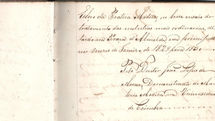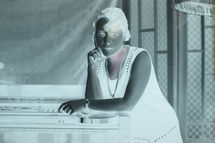Search


Between Knowledge and Distance: Medicine and Care Beyond the Major Centres
Between Coimbra and the Alentejo, this text traces the transmission of medical knowledge over two centuries – from barber-surgeons to university-trained doctors – through a handwritten book from 1855. Different men, different times, yet the same commitment to knowledge as a form of care. A reflection on medicine beyond the major centres and on the value of preserving what passes between hands and generations.


Between Hands and Memory: a Manuscript Medical Book and the Journey of Those Who Dictated, Used, and Preserved It
A 19th-century handwritten medical book dictated by João Lopes de Morais, a professor imprisoned for political reasons, and copied for the use of barber-surgeons. In this second text of the Documents with History series, I reveal the stories behind this unique document: authorship, circulation, use, and material value. Because caring also means making known – and preserving is also sharing what has been discovered.


License to Heal: Examination of a Bloodletter in 1844
First post in the Documents with History series, this article explores an 1844 examination record and revisits the practice of sangradores in 19th-century Portugal. Preserved inside an old medical manuscript, the document shows how empirical knowledge was formalised and reminds us that to preserve is also to share. A tribute to the value of papers that tell forgotten stories.


Retouched Collections – Foto-Estefânia: Retouching, Neighborhood Photography and the Glamour of Cinema
A technical and cultural analysis of the Foto-Estefânia collection, a set of retouched negatives from 1920s–30s Lisbon. The article explores how cinematic glamour shaped studio portrait aesthetics and the manual gestures applied to the negatives. A rigorous approach to image, taste, and photographic heritage.


To See is to Understand: A Virtual Reconstruction of the Main Altarpiece of the Church of the Holy Spirit in Évora
A virtual reconstruction of the main altar of the Church of the Espírito Santo, in Évora, led to an interactive digital platform launched in 2015. Ten years later, we revisit this project that made visible what was lost – and opened access to what was once confined to academia. A reflection on restoration, memory, and new ways of sharing cultural heritage.


Retouched collections – Seeing the Invisible
A proposal for a new reading of photographic negatives as cultural objects. Based on six Portuguese collections, it explores the role of manual retouching in image-making, highlighting the material, technical, and symbolic value of negatives in studio, scientific, and amateur photography of the 20th century.









